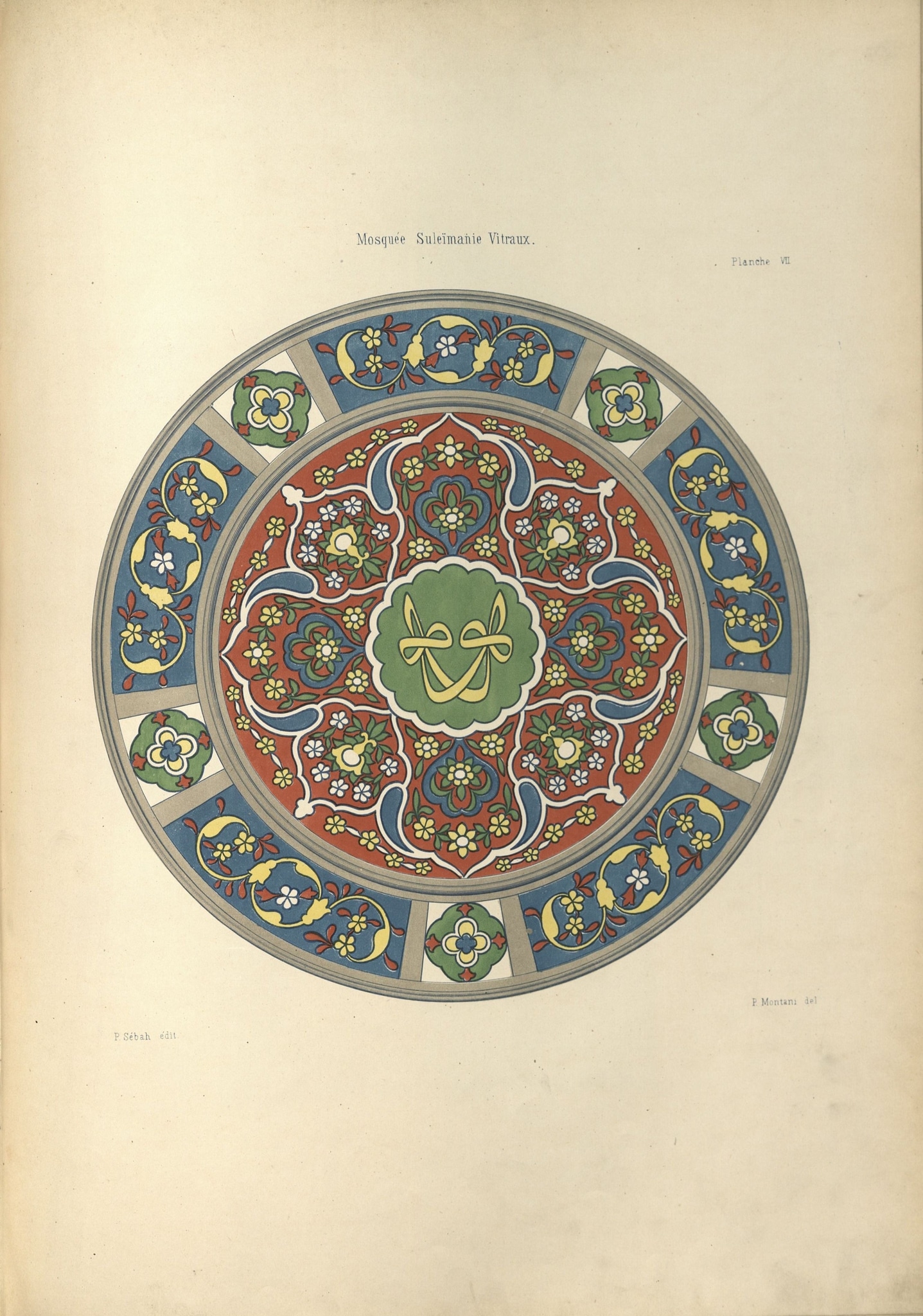Pl. VII is a colour print based on a drawing by Pietro Montani that accompanies the chapter on the Sülemaniye Camii (Süleymaniye Mosque) in Marie de Launay, Die Ottomanische Baukunst / L’Architecture ottomane / Uṣūl-i Miʿmāriyye-i ʿUsmaniyye, Istanbul: Imprimerie et lithographie centrales (1873).
According to the caption, the illustration shows a stucco and glass window from the Sülemaniye Camii (Süleymaniye Mosque) in Istanbul. The round window is divided by thick grey lines into a central round section and surrounding smaller sections. An inscription in yellow on a green background occupies the centre of the window. It is surrounded by white tendrils with blue split-palmettes as well as white and yellow flowers and green leaves on a red background. The outer sections adopt the window’s circular shape. Longer sections containing palmette tendrils in yellow with flowers and foliage in red, yellow, and white on a blue background, alternate with smaller sections showing a stylized flower-shape.
Only the stucco framing of the sections is indicated by the grey lines; the more delicate stucco framing of the small pieces of glass is not clearly depicted.
48A98311 · feuillage ~ ornement
48AA983112 · palmette ~ ornement - AA - stylisé
48AA98312 · vrilles ~ ornement - AA - stylisé
